The finest known example of a coin once dubbed "the most beautiful of all Pioneer gold coins, and one of the rarest" will take center stage in a new collection when it is sold in Heritage’s FUN US Coins Auction Jan. 10-14.
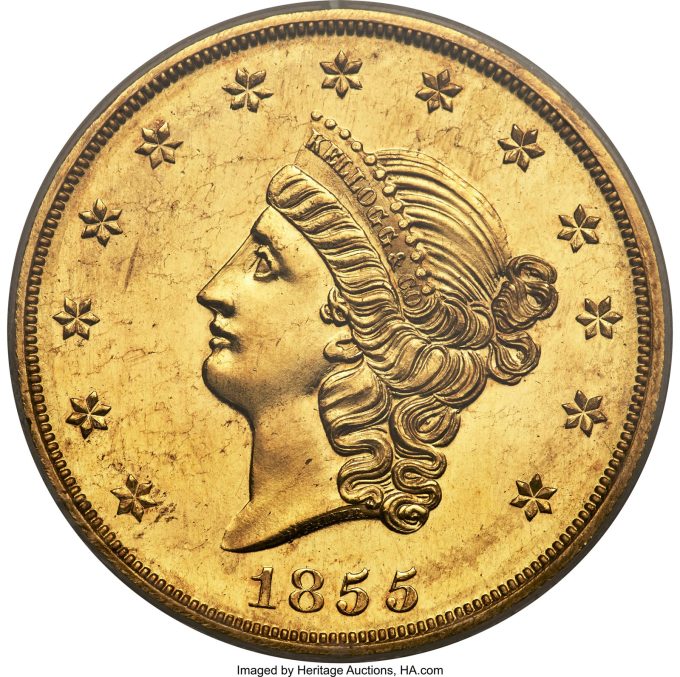
Fort Worth coins dealer B. Max Mehl is the source of that praise for the 1855 Kellogg & Co. Fifty Dollar PR64 Cameo PCGS. CAC. Kagin-4, High R.6, of which only 14 examples are known to present day collectors – none with a higher grade than the example that is up for grabs in the first major auction of the new year. This beauty has been called the finest known since its first public offering in 1909.
"All known examples of the Kellogg $50 were struck in proof format – likely to serve as presentation pieces for officials and businessmen," says Todd Imhof, Executive Vice President at Heritage Auctions. "There was some talk that Kellogg & Co., might issue a gold $50 to compete with the round $50s by Wass, Molitor & Co., in 1855, but none were ever struck for circulation and most of the proof examples were kept by principles within the firm.
"The concept of $50 coins was abandoned shortly thereafter. Even though the emergence in 1854 of the San Francisco Mint effectively ended private coinage in California, it took years for the Mint to produce enough coins to satisfy demand."
The original mintage for the 1855 Kellogg $50 was not recorded, and the initial distribution unknown. Kellogg’s heirs kept three examples until he died in 1886. Augustus Humbert held at least six specimens until he died in 1873 – one of which is the magnificent coin offered at FUN.
Arguably the most important issue in American coinage is the 1792 Half Disme, MS62, and the 1792 Half Disme, Judd-7, Pollock-7, R.4, MS62 NGC that will be offered at FUN is one of only an estimated 185 examples that have been identified, indicating a potential survival rate of just 12-13%.
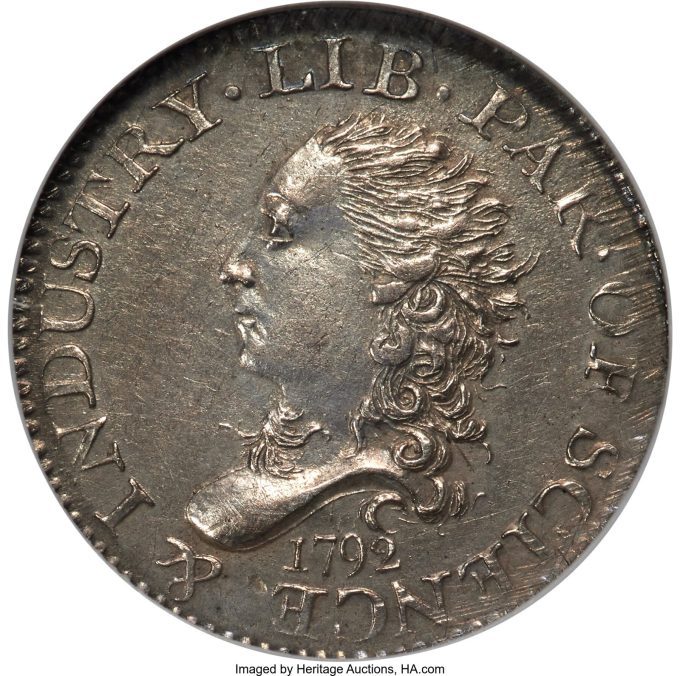
In addition to the sheer rarity, part of the intrigue in these coins – the country’s first official coins – is in their origin: the silver used to strike these coins was deposited by none other than Thomas Jefferson, who provided $75 worth of silver to the Mint, a transaction that led to the production of a reported 1,500 of this important early United States rarity.
From the collection of David T. Miller comes a beautiful 1893-S Morgan Dollar, MS63, an exceptional example of the rarest and most sought-after issue within the entire Morgan dollar series – a claim that can be made almost entirely because of its low mintage of just 100,000 coins and its limited survival rate, especially in Mint State.
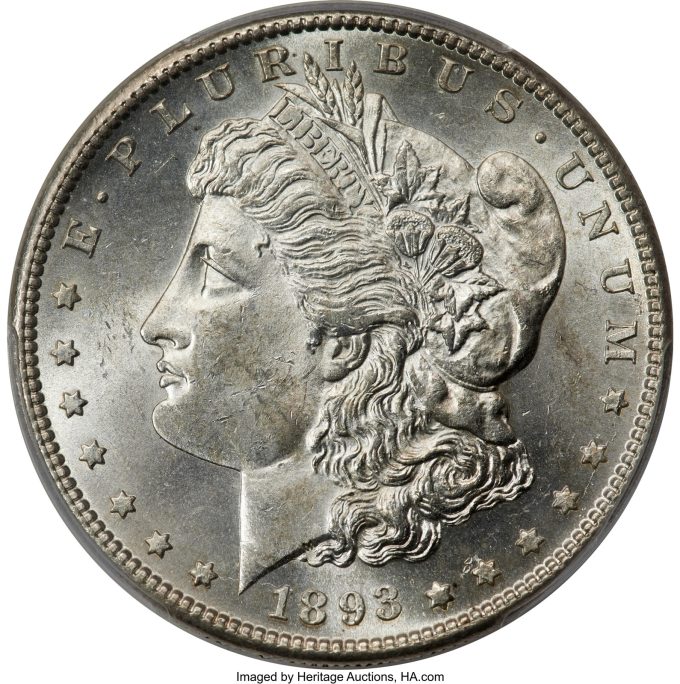
The economic turmoil of 1893 – the year marked the collapse of the Philadelphia and Reading Railroad, as well as a stock market collapse – impacted the availability of silver and the government’s approach to silver coinage. Combined with the already-limited capacity and resources of the San Francisco Mint resulted in the creation of a coin that would later be recognized as the pinnacle of rarity within the Morgan dollar series.
Also from Miller’s collection is a stunning 1889-CC Dollar MS64 Deep Mirror Prooflike PCGS. CAC. The Western heritage, low-mintage issues and high rates of attrition make the Carson City Mint among the most popular in American coin collecting. The 1889-CC Morgan dollar is a premier example of the legacy and popularity of the Mint, its scarcity emblematic of the limited productions that characterized the mint’s operations.
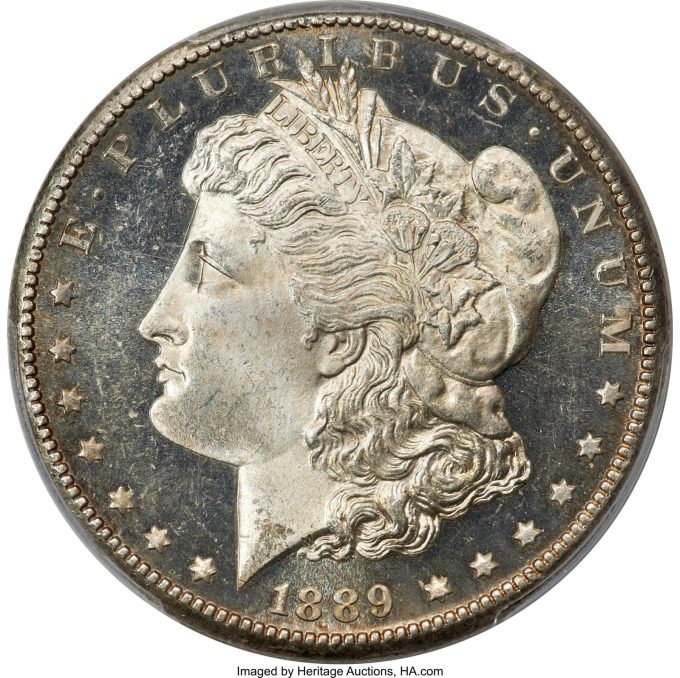
Its remarkably low mintage of 350,000 coins was a direct consequence of the political and economic circumstances prevailing at the time. After being shut down from 1885-89, the Carson City Mint reopened in 1889. It has been speculated that as many as 325,000 of the 350,000 coins struck may have been sent to the melting pot, with 11,000 to 15,000 survivors in all grades, including 1,250 to 2,000 pieces in Mint State. Uncirculated examples in the upper levels of the Deep Mirror Prooflike classification are decidedly rare.
The auction also will offer treasures from numerous top collections, including the Bob R. Simpson Collection, Part XI. Among the top selections from the collection is a pair of 1877 Half Unions – one an 1877 Half Union, Judd-1549, Pollock-1722, R.7, PR67 Brown PCGS that is the only non-gilt example in private hands, and the other an 1877 Half Union, Judd-1547, Pollock-1720, R.7, Gilt, PR65 PCGS. CAC that is the third-highest-graded among all examples.
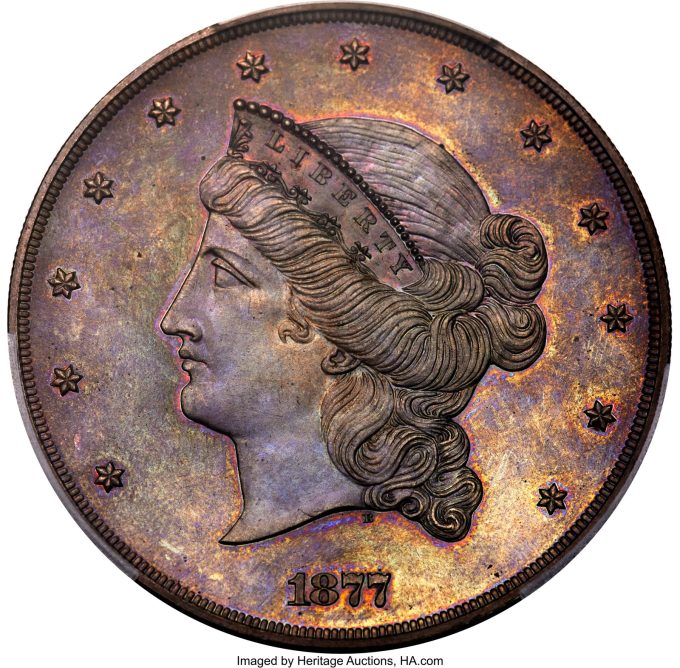
Old Pioneer Collection
The consignor of this collection was drawn to the history and romance of the early gold rushes in the United States; without access to Federal minutes, industrious entrepreneurs sought ways to transform gold dush and nuggets into private coinage – an endeavor that led to a variety of coinage, many of which exhibited unique designs. Among FUN’s lots from the Old Pioneer Collection are:
1830 Templeton Reid Quarter Eagle, AU58, PCGS. CAC – one of the first Territorial gold issues ever struck in the United States, along with their $5 and $10 counterparts, the offered example is one of 14 certified between PCGS and NGC.
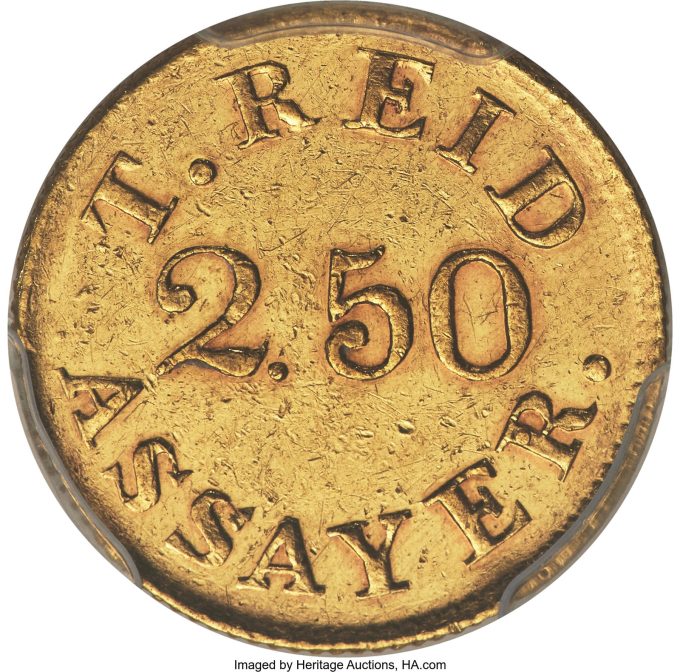
It was produced in small numbers during a period of just a few months in 1830. Many were melted for recoinage in later yeas, and all Templeton Reid gold coins are rare today. The third-finest example certified in the PCGS Population Report, this example surfaced at the 1973 ANA Convention.
1852 Assay Office Ten Dollar, AU55, a treasure that literally "went down with the ship" – in this case, the S.S. Central America – in the aftermath of a hurricane in September 1855.
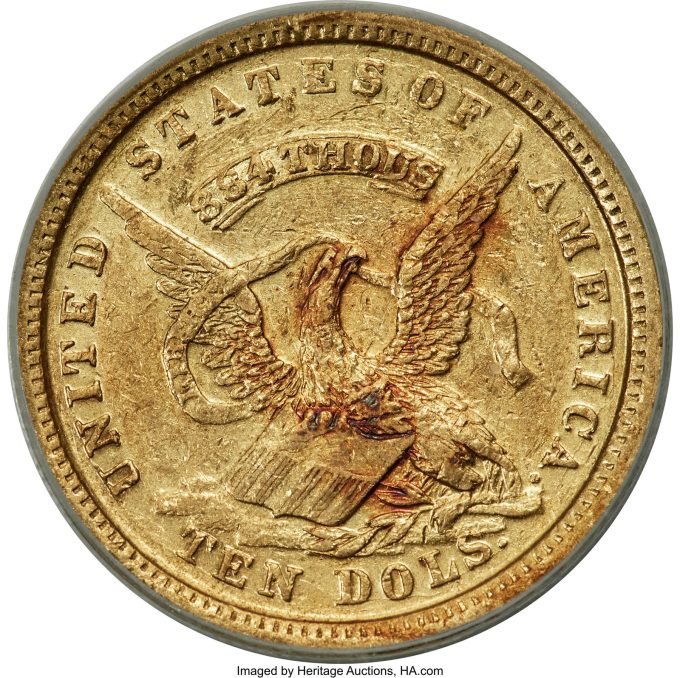
An 1804 Ten Dollar, Judd-34, Pollock-46, High R.7, PR64 PCGS is one of just four examples known and the only known Pattern for the King of Siam Proof set. According to the lot’s consignor, "The King of Siam Proof Set is one of the most enigmatic American numismatic treasures. These incredible diplomatic sets, in addition to the 1804 Proof Eagle, also included a famed original 1804 Dollar.
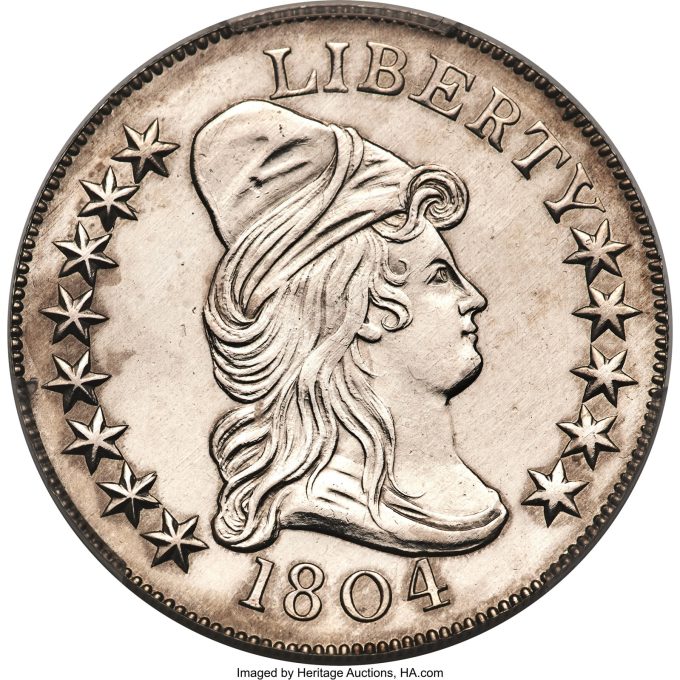
This pattern 1804 Eagle is the only known pattern made to perfect the dies before the gold eagle proofs were struck. This famous issue is a key ‘tent pole’ to the pattern series in the 1792 to 1840 era."
Other top lots in the auction include, but are not limited to:
-
1824 N-3 Cent, MS63 Brown
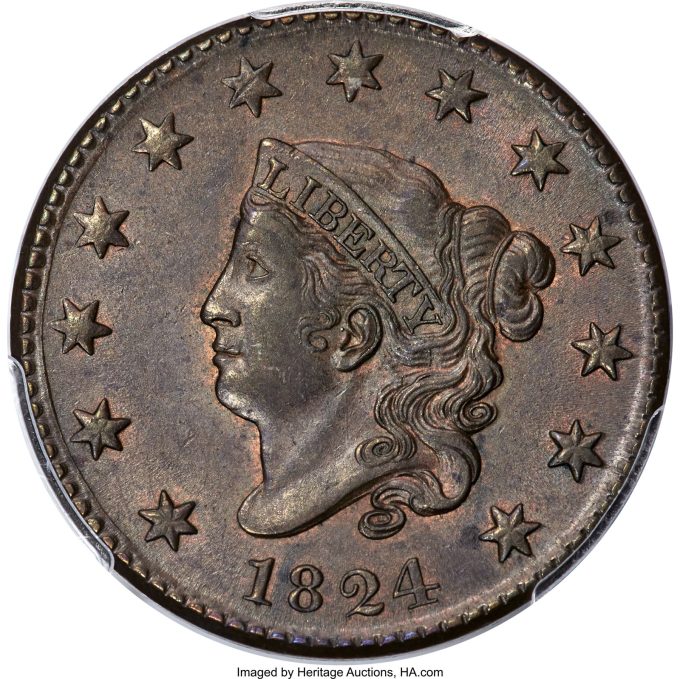
1824 N-3 Cent, MS63 Brown -
1840 N-3 Cent, MS65 Red and Brown – tied for the finest known example
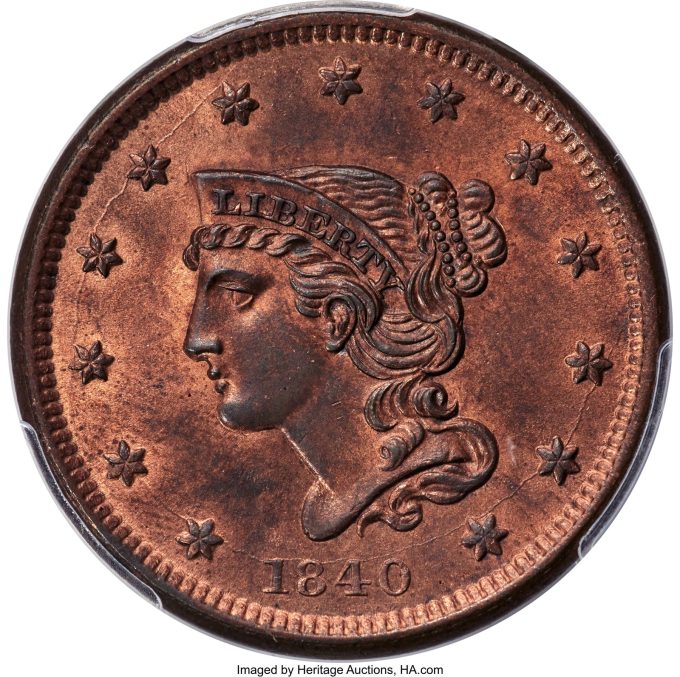
1840 N-3 Cent, MS65 Red and Brown -
1822 N-10 Cent, PR63 Red and Brown
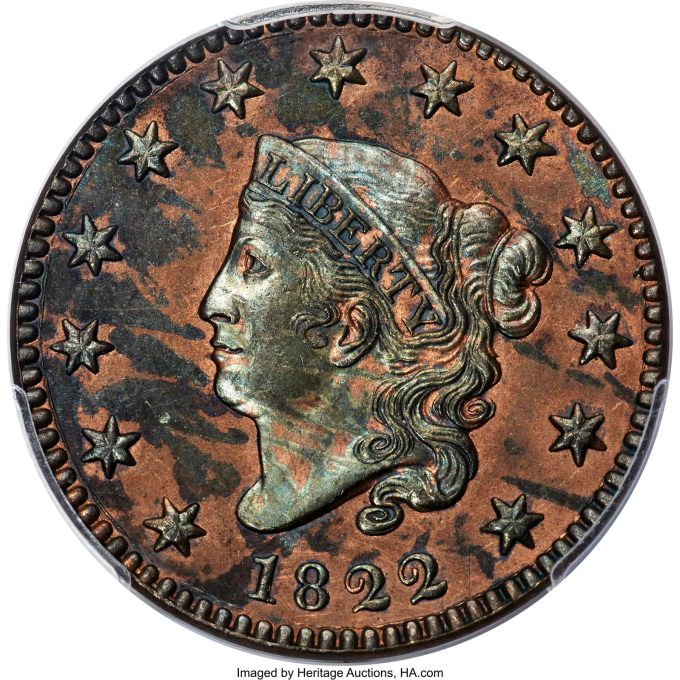
1822 N-10 Cent, PR63 Red and Brown
Images and information about all lots in the auction can be found at HA.com/1371.
About Heritage Auctions
Heritage Auctions is the largest fine art and collectibles auction house founded in the United States, and the world’s largest collectibles auctioneer. Heritage maintains offices in New York, Dallas, Beverly Hills, Chicago, Palm Beach, London, Paris, Geneva, Amsterdam, Brussels and Hong Kong.
Heritage also enjoys the highest Online traffic and dollar volume of any auction house on earth (source: SimilarWeb and Hiscox Report). The Internet’s most popular auction-house website, HA.com, has more than 1,750,000 registered bidder-members and searchable free archives of more than 6,000,000 past auction records with prices realized, descriptions and enlargeable photos. Reproduction rights routinely granted to media for photo credit.





